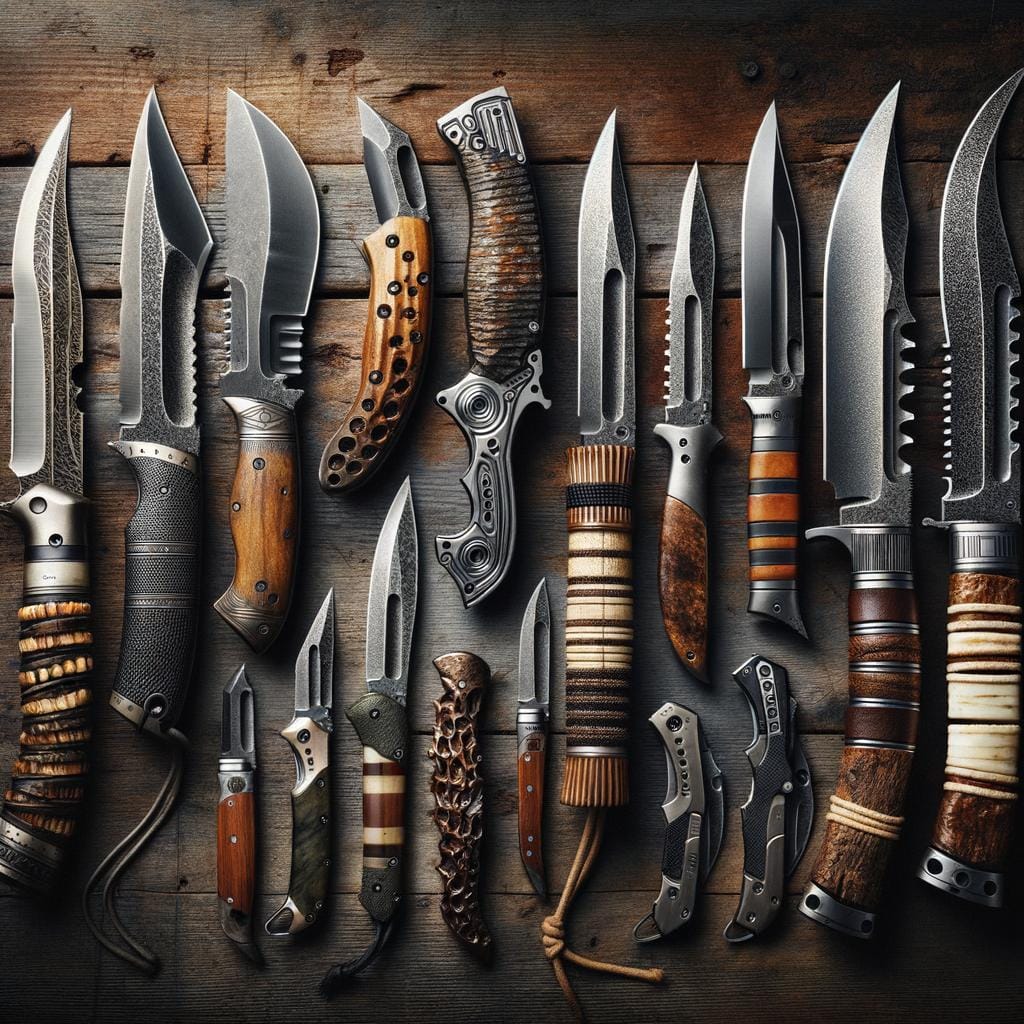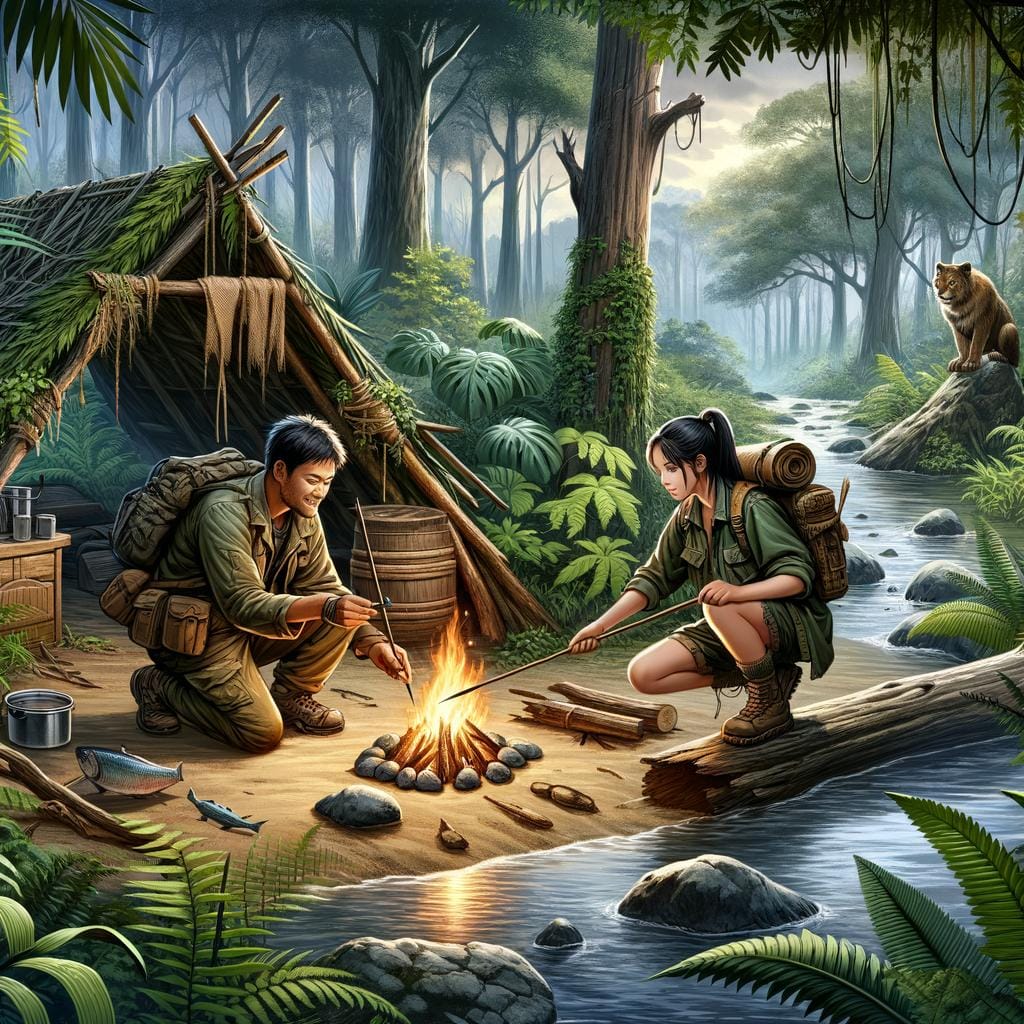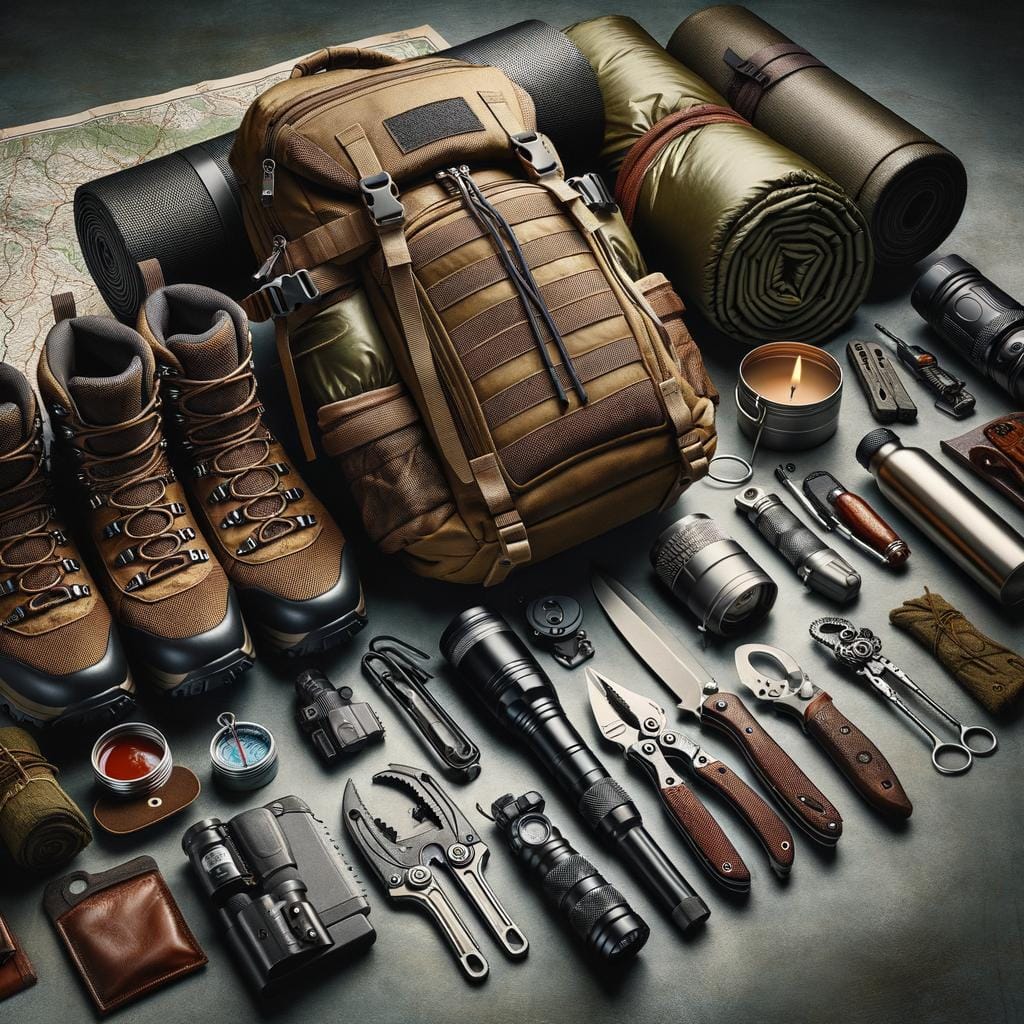Survival knives are essential tools for outdoor enthusiasts, campers, hikers, and those preparing for emergencies. These versatile blades can mean the difference between life and death in critical situations. Whether you find yourself lost in the wilderness or facing unexpected challenges, a reliable survival knife is a crucial piece of equipment to have at your disposal.
The history of survival knives dates back centuries, evolving from primitive tools to highly specialized gear designed for specific tasks. Understanding the origins of these knives provides insight into their significance and functionality in various scenarios. From early hunter-gatherers to modern-day adventurers, the use of survival knives has been a constant in human history.
When choosing a survival knife, there are several factors to consider, such as blade material, tang construction, and handle design. Each feature plays a vital role in determining the knife’s durability, versatility, and overall performance. By understanding these essential features and their impact on functionality, users can make informed decisions when selecting the right survival knife for their needs.
History of Survival Knives
The history of survival knives dates back to ancient times when early humans used simple tools made of sharpened stones or bones for hunting, self-defense, and survival. As civilizations evolved, so did the design and craftsmanship of these essential tools. One significant milestone in the evolution of survival knives was during the prehistoric era when metalworking techniques allowed for the creation of more durable and versatile blades.
In more recent history, survival knives gained popularity during World War II when soldiers required a reliable tool for various tasks in combat and survival situations. The iconic Ka-Bar knife issued to US Marines during the war became synonymous with toughness and reliability. This era marked a shift towards standardized designs and materials that prioritized functionality and durability.
Fast forward to modern times, survival knives have continued to evolve in terms of materials, design, and technology. Today, you can find a wide range of options that cater to different needs and preferences, from traditional fixed blade designs to innovative folding and multi-tool configurations. The rich history of survival knives serves as a testament to their enduring importance as versatile tools for outdoor enthusiasts, adventurers, and anyone looking to be prepared for unexpected situations.
| Evolution Milestones | Key Features |
|---|---|
| Ancient Times | Simple tools made of sharpened stones or bones |
| World War II | Standardized designs prioritizing functionality and durability |
| Modern Times | Diverse options catering to different preferences and needs |
Types of Survival Knives
Survival knives come in various styles, each designed to cater to different needs and preferences. One of the most common types is the fixed blade survival knife. Known for its durability and strength, fixed blade knives are ideal for heavy-duty tasks such as cutting, chopping, and even self-defense. These knives are typically more robust than folding knives and offer a reliable tool for outdoor enthusiasts and survivalists alike.
On the other hand, folding survival knives provide a more compact and portable option. Their ability to fold into a smaller size makes them convenient for everyday carry or situations where space is limited. While they may not be as strong as fixed blade knives, folding survival knives are versatile and can still handle a variety of tasks effectively. Additionally, some models feature locking mechanisms to ensure safety during use.
Another popular style of survival knife is the multi-tool survival knife. With additional tools built into the handle or sheath, these knives offer versatility beyond just cutting and slicing. From screwdrivers to can openers, multi-tool survival knives are designed to assist with various tasks in outdoor or emergency situations. While they may not excel in heavy-duty chopping like fixed blades, their utility in different scenarios makes them a valuable addition to any gear collection.
When choosing a survival knife, consider your intended use and personal preferences to determine which style best suits your needs. Whether you opt for a fixed blade for rugged performance, a folding knife for convenience, or a multi-tool for versatility, selecting the right type of survival knife is crucial for ensuring you have a reliable tool when venturing into the great outdoors or preparing for emergencies.
Research different styles, compare features, and choose a survival knife that will serve you well in times of need.
Essential Features
When choosing a survival knife, there are several key features to consider to ensure that it meets your needs in outdoor and emergency situations. One of the most important aspects to look at is the blade material. A high-quality blade material can make a significant difference in the performance and durability of the knife.
Common materials used for survival knives include stainless steel, carbon steel, and titanium. Stainless steel is known for its corrosion resistance and ease of maintenance, while carbon steel is preferred for its excellent edge retention and toughness.
Another essential feature to consider when selecting a survival knife is the tang construction. The tang refers to the portion of the blade that extends into the handle of the knife. A full tang construction means that the blade extends through the entire handle, providing maximum strength and durability.
This type of construction is crucial for heavy-duty tasks and ensures that the knife will not break under pressure. On the other hand, partial tang or rat-tail tang knives may be more lightweight but are not as reliable for demanding scenarios.
Handle design is also a critical factor to keep in mind when choosing a survival knife. The handle should be comfortable to grip and provide an ergonomic design that reduces hand fatigue during extended use. Additionally, it’s essential to consider whether the handle material offers good grip even in wet conditions.
Some common materials used for handles include rubber, micarta, G-10, and wood. Each material has its own advantages and disadvantages, so it’s important to choose one that suits your preferences and comfort level when using your survival knife in various environments.
Maintenance and Care
When it comes to survival knives, proper maintenance and care are essential for ensuring their longevity and effectiveness in outdoor and emergency situations. Cleaning, sharpening, and maintaining your survival knife regularly can make a significant difference in its performance when you need it most. Here are some tips on how to take care of your survival knife:
- Cleaning: After each use, make sure to clean your survival knife thoroughly with mild soap and water to remove any dirt, grime, or debris that may have accumulated. Dry the blade completely before storing to prevent rusting.
- Sharpening: Keeping your survival knife sharp is crucial for its functionality. Invest in a good quality sharpening stone or tool to maintain a sharp edge. Regularly hone the blade to ensure it is always ready for use.
- Maintenance: Check the overall condition of your survival knife regularly. Inspect the blade for any signs of wear or damage, tighten any loose screws or fittings, and lubricate moving parts as needed. Proper maintenance will extend the life of your knife.
By following these maintenance tips, you can ensure that your survival knife remains in top condition and ready for whatever challenges come your way. A well-maintained survival knife can be a reliable tool in various scenarios, from camping trips to emergency situations where its performance could mean all the difference between safety and danger. Remember that taking care of your survival knife is an investment in your preparedness and safety.
Survival Knife Uses
When it comes to survival situations, having a reliable survival knife can be a crucial tool to have in your gear. Survival knives are versatile tools that can serve various purposes beyond just cutting. From camping trips to emergency scenarios, these knives can assist in different tasks that may arise. Here are some detailed examples of how survival knives can be used in various scenarios:
1. Camping: When out in the wilderness for a camping trip, a survival knife is essential for tasks such as cutting firewood, preparing meals, or even setting up shelter. The durability and sharpness of the blade make it an invaluable tool for outdoor enthusiasts.
2. Emergency Situations: In emergency situations where help may not be readily available, a survival knife can be used for self-defense, building makeshift tools or weapons, or even signaling for help by carving symbols into trees or rocks. Its multipurpose nature makes it a handy tool to have in unpredictable situations.
3. Survival Scenarios: Whether you find yourself lost in the wilderness or facing a natural disaster, a survival knife can aid in creating necessary resources for survival such as building shelters, hunting food, or starting fires. The strength and reliability of the knife are crucial when faced with challenges that test your endurance and resourcefulness.
In all these scenarios, choosing the right survival knife with features suited to your needs and preferences is vital. Considering factors like blade material, tang construction, and handle design can impact how effective the knife will be in specific situations. Investing in a high-quality survival knife can mean all the difference between success and struggle when faced with outdoor or emergency challenges.
Survival Knife Buying Guide
When it comes to purchasing a survival knife, there are several important factors to consider to ensure you get a tool that meets your needs and preferences. One of the first things to think about is your budget.
Survival knives can range in price from affordable options to high-end models, so determining how much you are willing to spend will help narrow down your choices. It’s essential to strike a balance between quality and cost, as you want a knife that will be durable and reliable in emergency situations.
Next, consider the intended use of the survival knife. Are you primarily using it for camping trips, hiking expeditions, or as part of your emergency preparedness kit?
Different scenarios may require different features in a survival knife, so understanding how you plan to use it will help guide your decision-making process. For example, if you anticipate needing a heavy-duty knife for tasks like chopping wood or building shelters, you may opt for a fixed blade survival knife with a sturdy construction.
Personal preferences also play a significant role in choosing the right survival knife for you. Some individuals prefer larger blades for added versatility, while others may prioritize compactness and portability.
Handle design is another aspect where personal preferences come into play – whether you prefer materials like micarta or G-10 for durability and grip comfort. Ultimately, selecting a survival knife that aligns with your personal preferences will ensure that you feel comfortable and confident using it in various outdoor and emergency situations.
| Factor | Consideration |
|---|---|
| Budget | Determine how much you are willing to spend on a survival knife. |
| Intended Use | Think about where and how you plan to use the survival knife. |
| Personal Preferences | Consider factors like blade size, handle material, and overall design based on your likes and dislikes. |
Conclusion
In conclusion, the significance of having a reliable survival knife cannot be emphasized enough. Whether you are an outdoor enthusiast, a camper, or someone preparing for emergency situations, a good survival knife is a valuable tool that can make a difference in critical moments. From cutting branches for firewood to preparing food and defending yourself, the versatility of survival knives makes them an essential piece of equipment for any adventurer.
When considering which survival knife to choose, it is crucial to prioritize quality, durability, and functionality. Different types of survival knives offer unique advantages depending on your needs and preferences. Whether you opt for a fixed blade for its strength and reliability, a folding knife for its compactness and portability, or a multi-tool for its versatility, selecting the right one can make all the difference in your outdoor experiences and emergency preparedness.
In essence, investing in a high-quality survival knife is more than just acquiring a tool – it is about equipping yourself with the means to handle unforeseen challenges with confidence. By understanding the history, types, features, maintenance tips, uses, and buying considerations outlined in this article, you are better equipped to make an informed decision when selecting the survival knife that best fits your lifestyle.
Remember that when it comes to survival knives, choosing wisely ensures that you have a dependable companion ready to assist you in any situation that may arise.
Frequently Asked Questions
What Is the Very Best Survival Knife?
The very best survival knife is subjective and depends on individual needs and preferences. However, many experts recommend knives that are durable, versatile, and reliable in different survival situations. Some popular choices include the ESEE 6, Ka-Bar Becker BK2, and the Gerber StrongArm.
What Knives Do Navy Seals Use?
Navy SEALs are known to use a variety of knives depending on their mission requirements. One of the most commonly used knives by Navy SEALs is the Ontario MK 3 Navy Knife, which was specifically designed for maritime operations. Other knives used by SEALs include the SOG SEAL Pup Elite and the Benchmade Arvensis.
What Knife Does Bear Grylls Carry?
Bear Grylls, known for his survival TV shows, carries a knife called the Gerber Bear Grylls Ultimate Pro Knife. This knife was designed in collaboration with Bear Grylls himself and features a full tang construction, fire starter rod in the handle, sharpener integrated into the sheath, and other survival tools.

An avid outdoor enthusiast, writer, and environmental advocate who has spent over two decades exploring the world’s most breathtaking landscapes. With a background in environmental science and a passion for adventure, Frances combines her love for nature with her talent for storytelling to inspire others to embark on their own outdoor journeys.





